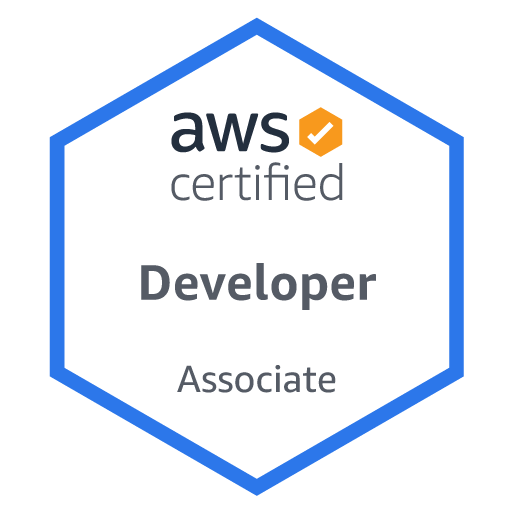Course Description
Bootcamp | 30 hours | 3.0 CEUs | $2,995
AWS Academy Cloud Developing is designed to help students gain technical expertise in development using cloud technologies and prepare them to take the AWS Certified Developer – Associate level AWS Certification exam. The curriculum is delivered through instructor-led classes, knowledge assessments, and hands-on labs. Students will also have access to course manuals, online knowledge assessments, a free practice certification exam, and a discount voucher for the certification exam.

Course Outline
- Module 1 - Welcome to Academy Cloud Developing (ACD)
- Module 2 - Introduction to Developing on AWS
- Recognize the systems development life cycle
- Describe how to start developing on AWS
- Indicate how to work with AWS SDKs
- Identify why AWS X-Ray is a critical developer tool
- Identify AWS management tools
- Develop and run a simple program in AWS Cloud9
- Module 3 - Introduction to AWS Identity and Access Management (IAM)
- Recognize the shared responsibility model
- Explain how IAM helps secure access to AWS resources
- Describe IAM user authentication Identify how to authorize an IAM user, group, or role
- Module 4 - Developing Storage Solutions with Amazon S3
- Describe how Amazon S3 can be used as a storage solution
- Identify Amazon S3 features and components
- Describe two ways to protect data with Amazon S3
- Describe the function of the S3 object operations (PUT, GET, SELECT, DELETE)
- Explain how to manage access to Amazon S3 resources
- Develop with Amazon S3 using the AWS SDKs
- Module 5 - Developing Flexible NoSQL Solutions with Amazon DynamoDB
- Identify Amazon DynamoDB features
- Describe Amazon DynamoDB components
- Explain how Amazon DynamoDB uses partitions Indicate how indexes are used with Amazon DynamoDB
- Describe how Amazon DynamoDB keeps data consistent
- Recognize when streaming and global tables are used
- Explain the backup and restore process Develop flexible NoSQL solutions with Amazon DynamoDB
- Module 6 - Introduction to Caching with Amazon CloudFront and Amazon ElastiCache
- Explain when caching is used
- Describe caching with Amazon CloudFront
- Describe caching with Amazon ElastiCache
- Apply caching strategies
- Module 7 - Introduction to Containers
- Describe the history, technology, and terminology behind containers
- Differentiate containers from bare-metal servers and virtual machines
- Identify the characteristics of a microservices architecture
- Recognize the drivers for using container-based workloads
- Host a basic website by using Docker containers
- Module 8 - Developing Solutions with Amazon SQS and Amason SNS
- Recall how message queues work
- Describe Amazon SQS
- Send messages to an SQS queue
- Describe Amazon SNS
- Explain Amazon SNS concepts
- Describe Amazon MQ
- Module 9 - Developing Event-Driven Solutions with AWS Lambda
- Explain serverless computing
- Describe how AWS Lambda works
- Recognize AWS Lambda execution models
- Identify how to use AWS IAM to grant Lambda permissions
- Indicate the steps to author and configure a Lambda function
- Explain how to deploy serverless applications
- Develop event-driven solutions with AWS Lambda
- Module 10 - Developing Solutions with AWS Step Functions
- Recognize application programming interfaces
- Describe Amazon API Gateway
- Indicate the steps for developing RESTful APIs with Amazon API Gateway
- Module 11 - Developing Solutions with Amazon API Gateway
- Recognize the dynamics of workflow coordination in distributed applications
- Describe AWS Step Functions Identify state types
- Indicate common use cases for AWS Step Functions
- Recall AWS Step Functions APIs
- Module 12 - Developing Secure Applications on AWS
- Identity how to secure applications
- Describe how to manage your application’s secrets
- Recall how to authenticate with AWS Security Token Service
- Describe how Amazon Cognito is used to build secure applications
- Module 13 - Deploying Applications on AWS
- Describe DevOps
- Recognize AWS code services for CI/CD
- Summarize deployment strategies
- Describe how AWS Elastic Beanstalk is used to deploy applications
- Describe how AWS CloudFormation is used to deploy applications
- Describe how AWS SAM is used to deploy serverless applications
Learner Outcomes
AWS Cloud Developing teaches students how to:
- Recall cloud computing services and models
- Describe developing on AWS
- Configure AWS Identity and Access Management for programmatic access
- Configure storage with Amazon S3 programmatically
- Develop with DynamoDB
- Explain caching
- Configure containers
- Develop event-driven solutions with Lambda
- Configure solutions with API Gateway
- Develop solutions with SQS and SNS
- Describe the use of Step Functions
- Identify best practice for building secure applications
- Identify best practice for deploying applications
Additional Information

This class prepares you for the AWS Certified Developer - Associate exam.
Prerequisites
AWS Academy Cloud Developing requires a strong foundation in IT concepts and skills. To ensure success in this course, students should have:
- Completed AWS Academy Cloud Foundations course or have equivalent experience
- A working knowledge of distributed systems
- Familiarity with general networking concepts
- A working knowledge of multi-tier architectures
- Familiarity with cloud computing concepts
Duration
30 Hours | 5 Days or 10 Nights*Academic Unit eligibility to be determined by college/university in which you are enrolled in a degree seeking program.
